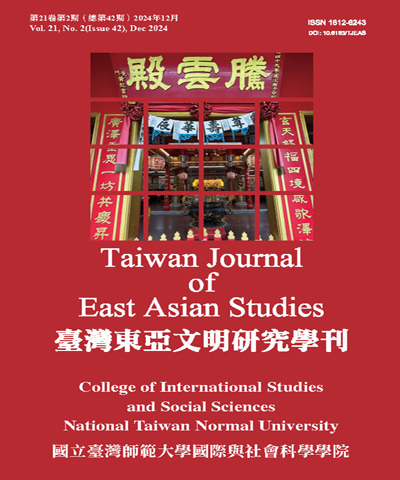
臺灣東亞文明研究學刊/Taiwan Journal of East Asian Studies
國立臺灣師範大學國際與社會科學學院,正常發行
五年影響係數
0.055
數據由ACI學術引用文獻資料庫提供
0.055
2024 年
學門
領域排序
哲學
16
歷史
21
中文
33
關於
目前無簡介內容
出版資訊
- ISSN : 1812-6243
- DOI : 10.6163/TJEAS
- 出版單位 : 國立臺灣師範大學國際與社會科學學院 , 台灣
- 收錄起始 : 3卷1期(2006/06)
- 學科分類
- 期刊索引 : THCI, ACI, Scopus, ESCI
- 刊頻 : 半年刊 , 正常發行

